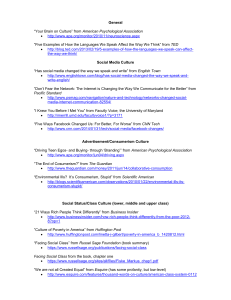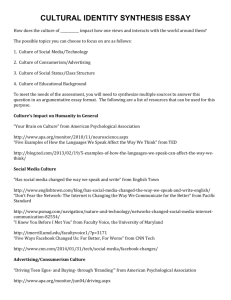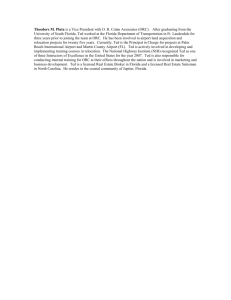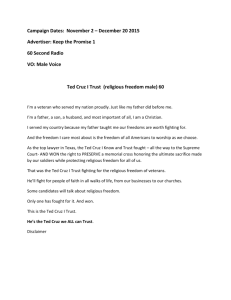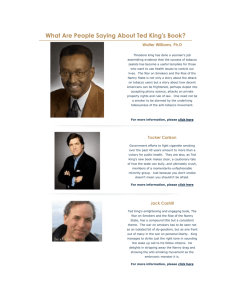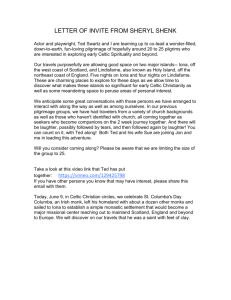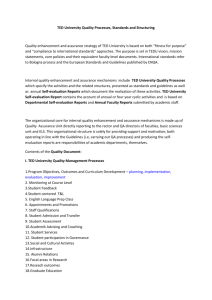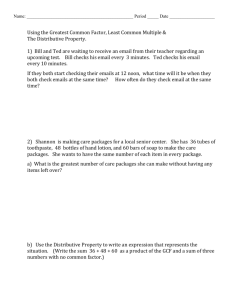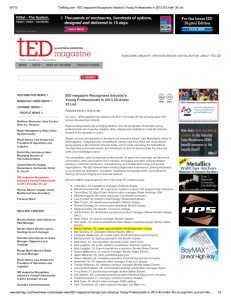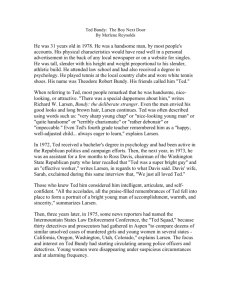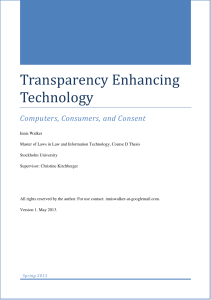Talk Like TED Book Summary 1.02
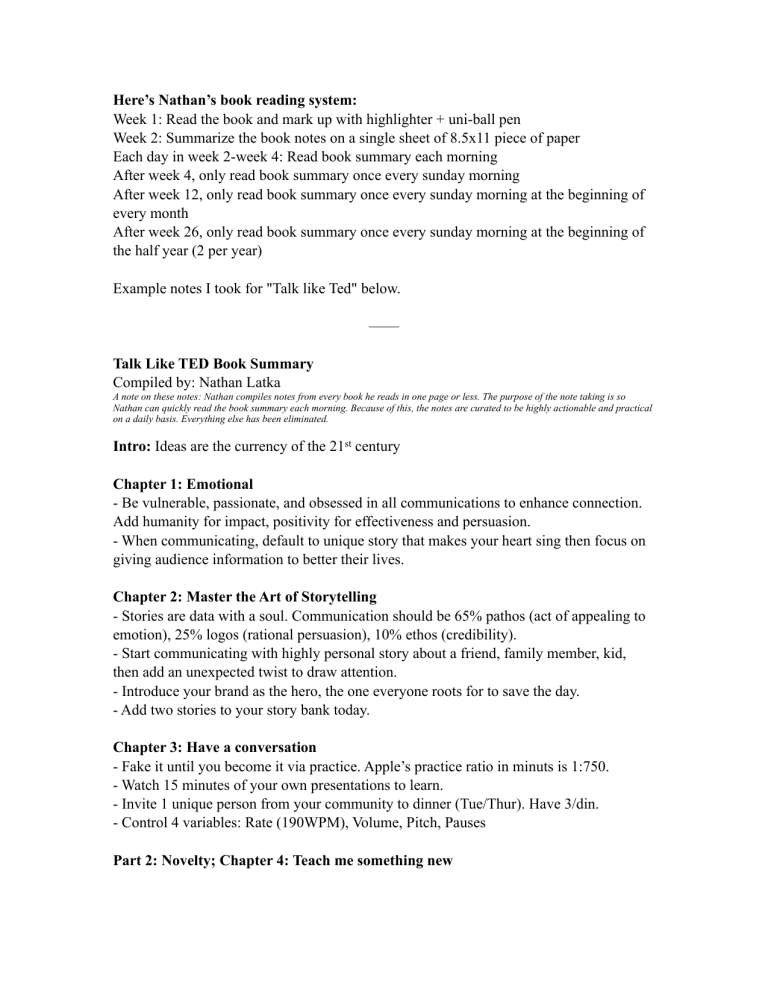
Here’s Nathan’s book reading system:
Week 1: Read the book and mark up with highlighter + uni-ball pen
Week 2: Summarize the book notes on a single sheet of 8.5x11 piece of paper
Each day in week 2-week 4: Read book summary each morning
After week 4, only read book summary once every sunday morning
After week 12, only read book summary once every sunday morning at the beginning of every month
After week 26, only read book summary once every sunday morning at the beginning of
!
the half year (2 per year)
!
Example notes I took for "Talk like Ted" below.
——
!
Talk Like TED Book Summary
Compiled by: Nathan Latka
A note on these notes: Nathan compiles notes from every book he reads in one page or less. The purpose of the note taking is so
Nathan can quickly read the book summary each morning. Because of this, the notes are curated to be highly actionable and practical
!
on a daily basis. Everything else has been eliminated.
!
Intro: Ideas are the currency of the 21 st century
Chapter 1: Emotional
- Be vulnerable, passionate, and obsessed in all communications to enhance connection.
Add humanity for impact, positivity for effectiveness and persuasion.
- When communicating, default to unique story that makes your heart sing then focus on
!
giving audience information to better their lives.
Chapter 2: Master the Art of Storytelling
- Stories are data with a soul. Communication should be 65% pathos (act of appealing to emotion), 25% logos (rational persuasion), 10% ethos (credibility).
- Start communicating with highly personal story about a friend, family member, kid, then add an unexpected twist to draw attention.
- Introduce your brand as the hero, the one everyone roots for to save the day.
!
- Add two stories to your story bank today.
Chapter 3: Have a conversation
- Fake it until you become it via practice. Apple’s practice ratio in minuts is 1:750.
- Watch 15 minutes of your own presentations to learn.
- Invite 1 unique person from your community to dinner (Tue/Thur). Have 3/din.
!
- Control 4 variables: Rate (190WPM), Volume, Pitch, Pauses
Part 2: Novelty; Chapter 4: Teach me something new
Create dopamine rush via emotionally charged event to help people memorize. Should focus on only one idea that unlocks ideas in listeners mind, previously not considered.
!
Appeal to all senses.
Chapter 6: Lighten Up
!
Steal humor and put in the right context, don’t invent new jokes. Won’t be funny.
Part 3: Memorable; Chapter 7: 18 minute rule
Conserve decision making power by finding things to automate (like food/clothes). Eat glucose. Create constraints to drive creativity. Power of 3 (Aladdin wishes, primary
!
colors, jesus, wise men. If you can’t explain simply, you don’t know well enough
Chapter 8: Paint mental picture
Journal one second every hour to jog memory. Measure or doesn't exist. Convert words to
!
pictures, 6x more effective.
Chapter 9: Stay in your lane (worthless chapter)
Talk Like TED Follow Up Learning/Studies
!
Compiled by: Nathan Latka
These are resources mentioned in the book that intrigued me. I plan to study them all over the next 30 days.
People to study:
Bryan Stevenson longest standing ovation in TED history
Matthieu Richard on the habits of happiness
Larry Smith
Aimee Mullins
Jill Bolte Taylor (her own stroke)
Richard St. John: 8 secrets of success
Aristotle, father of communication, Ethos
Ronald Reagan and his charisma, storytelling ability
Sir Ken Robinson (school kills creativity)
Jonah Sachs, Winning the Story Wars
Isabele Allende, 2007 Ted Talk on creating great characters
Amanda Palmer Ted Talk
Study gestures of Ernesto Sirolli
Study hand movement from Dr. David McNeil
Study Cisco CEO John Chambers hand movements/delivery
Study gestures of Jennifer Granholm
Hans Rosling Ted Talk (#1 for Ben Affleck, Steve Case, Bill Gates favorite)
Study Susan Cain on power of solitude and being alone (favorite of steve case)
How to live before you die, Steve Jobs
John Medina, emotionally competent stimulus
Amygdala
Study manipulating brain in real time, Raghava KK
Seinfeld deconstructing a joke for the NYT
Kennedy’s Inagural Speech
Kennedy’s rice university speech on sept. 12 1962
Kevin Allocca, youtube analyst
Brene Brown, The power of vulnerability
Gates, Innovating to Zero
Chris Jordan, Barbie dolls to feel big numbrs
!
Study Lisa Kristine and how she uses words to capture beautfy and hardships
Write blog on:
!
9 Common Elements Every Successful Webinar Has
Ideas:
5 Person in person think tanks (keep it small, be a good editor)
Say this on webinars: “I’m in a unique position to analyze Facebook contests. I’ve helped launch over 200,000 over the past 3 years. Experts in their fields are known to have adopted the principles revealed in this webinar and hundreds of thousands of marketers around the world are using the method to transform their social marketing campaigns.
These techniques are not unique to the big guys. They just happen to be very good at putting all the pieces together. If you watch until the end, you can too.”
Test one time price on webinar equal to current LTV, see if it performs better
Have 3 people over for dinner twice a week – explore ideas, the more diverse, the better.
Invite passionate people into your life.
Must build more stories with customers so I can more frequently share stories
Fly to customers, learn about them, build stories.
Good fortune, ill fortune graph over time. Start with terrible ill fortune, good fortune, dip to axis again, off the scale happiniess (page 71)
When presenting, have someone in audience control slides so as to follow your speech.
Study dopamine to give audience more hits (also helps retain information)
Saying to use on Webinar: “Wow. Have you read anything, anywhere in the last week that
!
is remotely as important as that number?”
New book ideas:
Mastery by Robert Greene
Journal of Business Venturing (Sept. 2012 issue)
The Longevity Project, Howard Friedman
Peter Guber, Tell To Win (author of Batman, Color Purple)
Bob Fennis, Marielle Stel “Journal of Experimental Social Psychology”
The Buying Brain by Dr. A.K. Pradeep
Rod A Martin: The Psychology of Humor
Willpower by Roy Baumeister
The Laws of Subtraction, Matthew May
No visuals, no slides, no props for Bryan Stevenson
Ted started as 800 people getting together 1/yr.
Scientists are using fMRI (functional magnetic resonance imaging) to scan peoples brains to measure activity.

